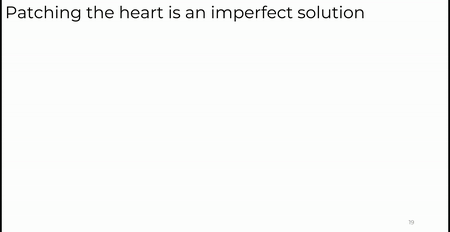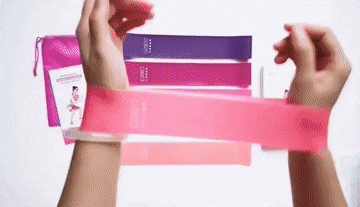Biomechanical Modeling of Metamaterial-Based Cardiac Patch Grafts (Supplemental Info)
When a myocardial infarction (MI), or heart attack, occurs, part of the heart can become damaged and fibrotic due to the loss of blood supply.
Myocardial infarction (MI) occurs when the blood vessels that supply the heart with blood become blocked. (Ref: Mount Sinai)
Post-MI the infarcted portion of the heart can become thin and weakened, leading to a progressive degeneration of cardiac output and overall health, ultimately culminating in heart failure.
Progression to heart failure induced by MI (Ref: Mayo Clinic)
Patch grafts can be used to reinforce the damaged portion of the heart, but they also restrict diastolic filling and cannot contribute to improved cardiac output. However, as previous research has shown (Fomovsky et al., 2012; Clarke et al., 2013) even small design changes to patch materials can yield meaningful improvements in heart function.
Inspired by the counterintuitive behavior of auxetic mechanical metamaterials, which get thicker when stretched rather than thinner (due to their negative Poisson’s ratio), we set out to see if a cardiac patch graft material comprised of an auxetic metamaterial could have favorable biomechanical properties
Conventional, or meiotic, materials get thinner when stretched
Auxetic materials get thicker when stretched
In theory, an auxetic patch graft could harness the stretching experienced in the infarcted region and become thicker, similar to healthy myocardium during systole
To understand how an auxetic metamaterial cardiac patch would behave, we modified an existing in silico, left ventricle model developed by Estrada and colleagues to include Homogeneous and Heterogeneous auxetic patch models, in addition to the previously developed Baseline, Ischemia, and Meiotic patch models.
Examples of Homogeneous (left) and Heterogeneous auxetic metamaterial designs. The Homogeneous auxetic expands equally in both transverse directions whereas the Heterogeneous auxetic is biased to expand in just one transverse direction. This biased expansion is potentially of interest for cardiac patching applications in order to direct all expansional energy and force inward towards the heart
Example of the left ventricle model, visualizing fiber stretch. (Baseline condition shown)







